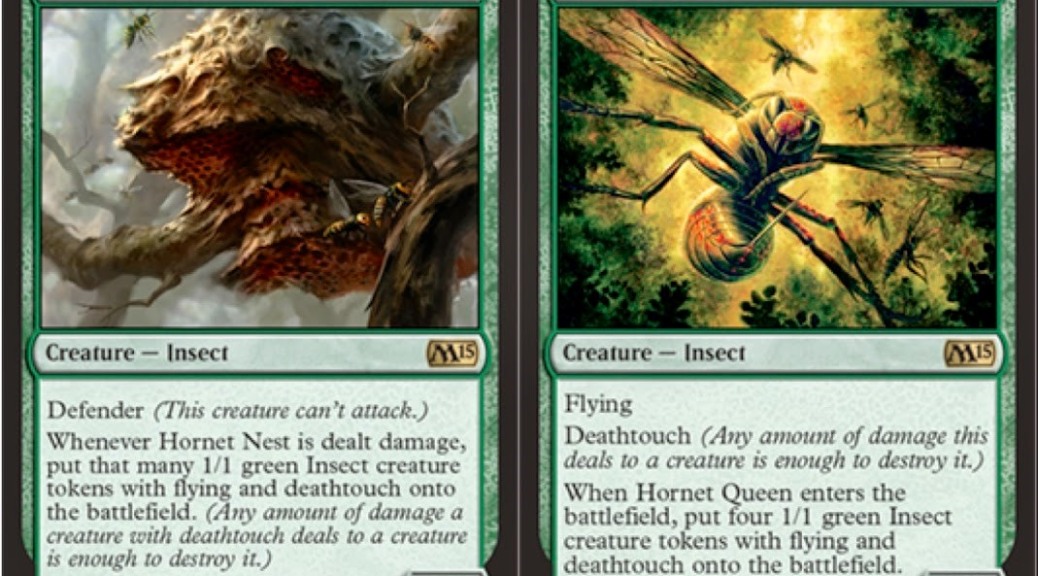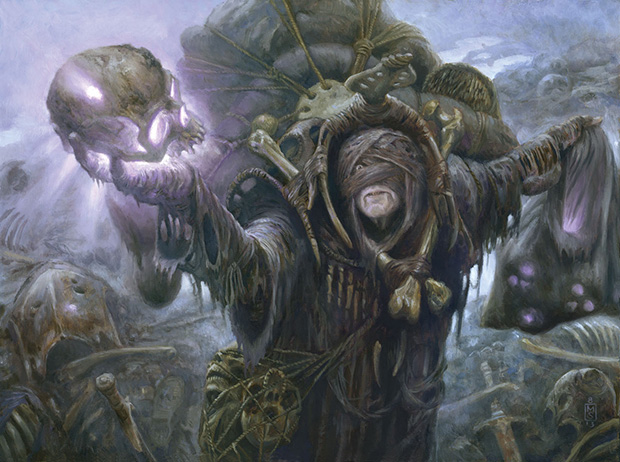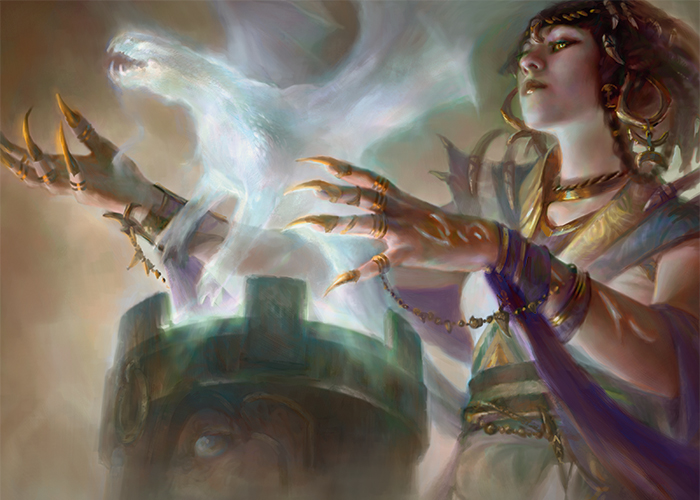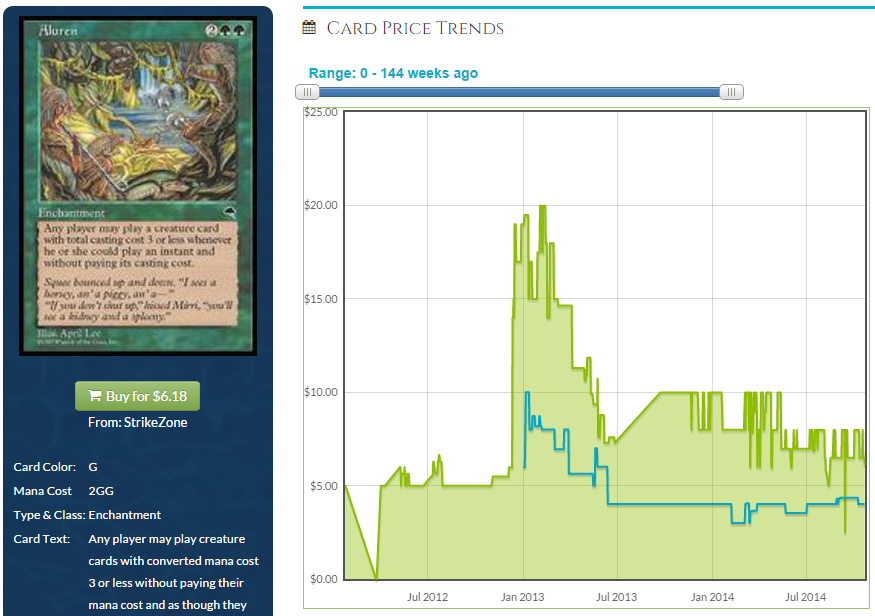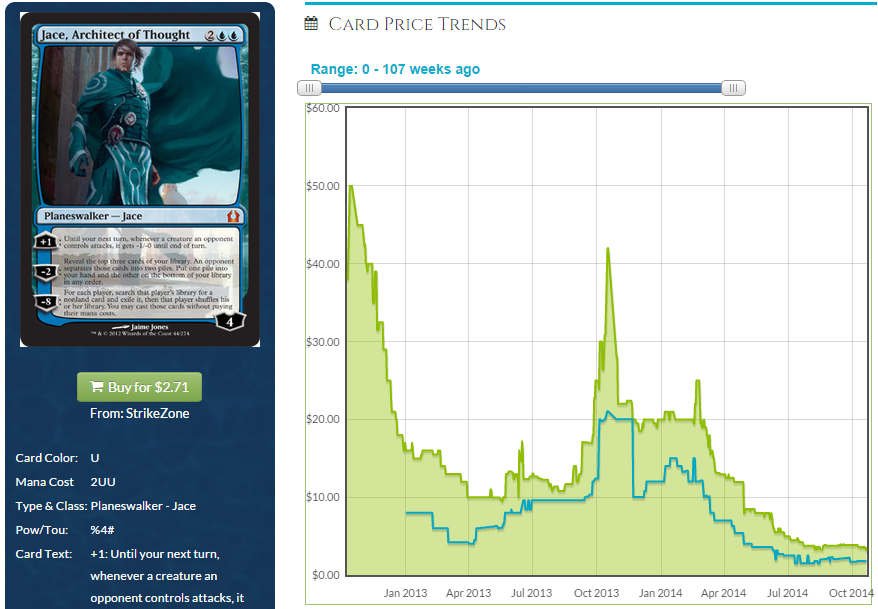by James Chillcott (@MTGCritic)
Weekend Summary
Across three major Standard tournaments this weekend, the story is clear: we are facing one of the most interesting and diverse Standard formats in recent memory. Sure, Jeskai Wins still managed to take down two of three major tournaments (Grand Prix Stockholm and SCG Open Minneapolis) but overall the field looked far more open than even a week ago with a number of new archetypes popping up as serious contenders for best deck in standard.
Across all three Top 8’s, here’s the archetype summary:
- 4 Abzan Mid-Range + 1 Abzan Aggro
- 4 Mardu Mid-Range (1 Winner)
- 3 Jeskai Wins (2 Winners)
- 3 Temur Mid-Range
- 2 Whip Decks: 1 Sidisi UGB/1 GB
- 2 GB Enchantress
- 2 G/R Mid-Range
- 1 Mono-Red Aggro
- 1 U/W Control
- 1 Jeskai Ascendancy Combo
Keep in mind none of these decks can be considered lucky shots as all of them survived 12-18 rounds of Swiss. Clearly this is a format that will reward careful meta-gaming and skilled play as it evolves.
Noteable cards of the weekend included:
- Whip of Erebos: So powerful it has defined at least 3 different archetypes this year, this theoretically vulnerable artifact enchantment put multiple players over 100 life this weekend. If there is anything holding it back it’s the potential for these decks to generate incredibly grindy games that have trouble closing out despite the huge life gain. Perhaps something like Empty the Pits is needed to mop up? Moving forward look for some upward pressure on the price towards $4-5 if these decks continue to perform.
- Sidisi, Brood Tyrant: In the Sultai Whip versions, Sidisi performed well all weekend and looks set to climb.
- Keru Spellcatcher came out of nowhere in the Top 8 semi-finals to steal a game for a Temur player that looked lost. It’s a one-of in a single Temur build so far, but my ears are perked up on the potential for a rise above bulk status.
- Hornet Nest: Likewise, the RG Monster builds running four main deck Hornet Nest did some very nasty things to unsuspecting opponents and it’s possible that this M15 rare can snag a slot in more main decks if the ground keeps getting clogged up by mid-range decks.
- Doomwake Giant & Pharika: The GB Enchantress decks may or may not catch on, but their ability to chain enchantments entering play through Pharika and the -1/-1 happy giant of doom might be one of the best one-sided wraths options in the format.
In other news Eternal Weekend crowned new Legacy and Vintage champs this weekend. In the Legacy portion of the tournament the buzz was all about the dominance of UR Treasure Cruise/Delver strategies, and it was a surprise to no one that the new Ancestral Recall clone took down the tournament with relative ease. Foil Treasure Cruise, which should by all usual standards by headed to $10 or less, is holding up well at $30 so far with only the spectre of a winter banning to hold it back thus far.
For the Timmies in the room, the presence of a Slivers based deck in the Top 8 had to be a highlight of the weekend, making all of those old rare Slivers in my trade binder shiver with anticipation of a Sliver revival.
The Vintage tourney was won by Marc Tocco playing his Oath of Druids deck with Griselbrand to a big win! Noteable cards in the Vintage decks included the strong showings by Dack Fayden, Treasure Cruise and Dig Through Time, much as expected.
Main Coverage
Between a European Grand Prix, the SCG Open Series and the TCGPlayer 50K Championship, we have several prominent Standard tournaments this weekend worth keeping an eye on for shifts in the metagame. With Eternal weekend unfolding to crown champs for Legacy and Vintage, we’re also seeing the ascent of Treasure Cruise in U/R Delver builds. Here’s how events are unfolded and what it means for your paper magic collection.
Grand Prix Stockholm
Top 8
Another standard Grand Prix Top 8 is on the books, and again we see strong evidence that this format is wide open for anyone with a creative deck and skillful play to challenge the top tables.
Here’s our Top 8 archetype breakdown:
- 2 G/B Enchantress
- 1 Jeskai Wins
- 1 Mono-Red Aggro
- 1 Temur Mid-Range
- 1 GB Whip
- 1 Sidisi Whip
- 1 Abzan Mid-Range
Quarter-Finals:
- Jeskai Wins ( Matej Zaltkaj) vs. G/B Enchantress (Matteo Cirigliano): Jeskai wins
- Mono-Red Aggro (Gionvanni Rosi) vs. Temur Mid-Range (Einar Baldvinnson): Temur Mid-Range wins
- GB Enchantress (Lukas Blohon) vs. Sidisi Whip (Christian Seibold): GB Enchantress wins
- Abzan Mid-Range (Thiago Rodrigues) vs. Jeskai Wins (Alexander Pasgaard): Abzan Mid-Range wins
Semi-Finals:
- Temur Mid-Range (Einar) vs. GB Enchantress (Blohon)
- Abzan Mid-Range (Thiago) vs. Jeskai Wins (Matej)
Finals:
- Temur Mid-Range (Einar) vs. Jeskai Wins (Matej)
- Matej takes down Grand Prix Stockholm with Jeskai Wins in convincing fashion. Congrats Matej!
- In post interview coverage Matej explains that Dig Through Time should be a 1 of max in the deck to avoid clunky draws and stay fast.
Day 2
Day 2 Metagame Breakdown by WOTC coverage staff shows Abzan down to just 30% of the field, with Jeskai Wins joined by Mardu Mid-Range, both at 14% of field. Sidisi Whip is the breakout deck of the tournament so far with multiple copies at the top tables and over 7% of the Day 2 metagame, again demonstrating that this format is far from binary and far from solved.
Mikael Magnusson is playing a Riddle of Lightning UR CounterBurn control deck leveraging Treasure Cruise/Dig Through Time for big damage alongside main deck Steam Augery, Nullify and Anger of the Gods. He’s 7-3 going into Round 11. Keru Spellsnatcher masquerading as an Ashcloud Phoenix jacks a Jeskai Charm pointed at it in morph mode to make one of the sexiest debuts of the tournament! Even jank rares are seeing play in KTK Standard. Magnusson then goes on to play an excellent Game 3 and go to 8-3 to keep his Top 8 dreams alive with his rogue deck design.
Round 12 Feature Match showcases UW Heroic vs. Jeskai Ascendancy Combo, highlighting just how deep the top tables are running at this 1000+ player tournament. Jeskai Combo goes to 10-2 looking very much alive as a viable top table contender.
10:20am EST: Christian Seibold wins his final match to run 12-2-1 and likely lock up a Top 8 berth with an attack from his Sagu Mauler out of his Sidisi Whip deck. Worth keeping an eye on Whip of Erebos, Hornet Queen, Sagu Mauler and Sidisi, Brood Tyrant as events unfold. Sagu Mauler is my pick for underrated beater in a standard where many decks have trouble dealing with outside of hornet tokens.
10:35am EST: This battle for Top 8 between Lindstrom and Juza demonstrates the raw lifegain potential of Whip of Erebos while also showcasing the extremely grindy nature of it’s matches against other mid-range decks, that often push the match to full time and potentially deadly draws.

Day 1
Grand Prix Stockholm represents the first major Euro-Standard gathering of the season, and so far the tournament is unfolding along expected lines.
After 9 rounds, heading into Day 2 the following players were all at least 7-1-1:
- Sidisi Whip (Christian Siebold): 9-0
- Temur Mid-Range (Einar Agu Baldvinsson): 9-0
- Abzan Mid-Range (Oskar Skold): 9-0
- (Thiago Rodrigues): 8-1
- UB Control (Thomas Pettersson): 8-1
- (Matej Zatlkaj): 7-1-1
- Black/Green Enchantress (Lukas Blohon): 7-1-1
- Temur Aggro (Christoffer E Larsen): 7-1-1
Note: We’ll post decks for these players as they are posted.
TCGPlayer 50K Championship
Day 2:
Mardu Mid-Range featuring Butcher, Elspeth and Wingmate Roc takes down the TCGPlayer 50K Championship in the hands of Andrew Baeckstrom!
Finals: We have a Mardu Mid-Range playoff for the finals! Butcher of the Horde will be on the podium this weekend no matter what, potentially exerting a bit of upward lift in his price. (Limited to this archetype, the ceiling is likely $4-5 unless it starts winning more broadly.)
Semi-Finals: There’s not a single Abzan or Jeskai deck left in the Top 4! Instead we’re treated to two Mardu Mid-Range decks, a Temur mid-range and a very sexy new R/G build. What a healthy format!
- RG Mid-Range (Caleb) vs. Mardu Mid-Range (Cody)
- Mardu Mid-Range (Andrew) vs. Temur Mid-Range (Eric)
Update: It appears that there may be a 4-way prize split going on with the semi-final competitors, with highly casual games in motion.
Quarterfinals:
- Mardu Mid-Range (1st, Andrew Baeckstrom) vs. Abzan Mid-Range (8th, Josh McClain). Baeckstrom advances on the back of some strong play with Crackling Doom.
- Temur Mid-Range (Eric Flicklinger) vs. Mardu Mid-Range (Brian Weller Davis). Temur takes this down to advance.
- Mardu Mid-Range (Cody Lingelbach) vs Jeskai Ascendancy (Byrd)
- RG Mid-Range (6th, Caleb Durward) vs. Abzan Mid-Range (3rd, Ray Perez). Caleb’s innovative RG deck (running 4 main deck Hornet Nest) handily puts Abzan to bed, locking it out of Top 8 on the strength of a back-breaking Setessan Tactics.
Day 1:
After 15 rounds a Sunday Top 8 has been declared, and here’s how it breaks down:
- Mardu Mid-Range (Andrew Baekerstrom)
- Mardu Mid-Range (Cody Lingelbach)
- Mardu Mid-Range (Brian Weller-Davis)
- Abzan Mid-Range (Raymond Perez Jr.)
- Abzan Mid-Range (Josh McClain)
- RG Mid-Range (Caleb Durward)
- Temur Mid-Range (Eric Flicklinger)
- Jeskai Ascendancy Combo (Mark-Antony Byrd)
Of special note here is the fact that the Mardu Mid-Range decks shoved into 37.5% of the Top 8. Sure, Abzan still nabbed 2 slots, but a win for Mardu here could be signal that the downward trend on Butcher of the Horde could reverse back into the $6-8 range, especially if the pattern repeats elsewhere this weekend. The presence of R/G Monsters, Temur Mid-Range and the Jeskai Ascendancy combo decks also demonstrates that many of their key cards need to be watched for action. For Temur this means Savage Knuckleblade, Crater’s Claws and Rattleclaw Mystic are possibly on deck for gains. For Ascendancy, the central enchantment could easily be undervalued after losing value this week.
By far the most interesting deck in this Top 8 is the R/G Mid-Range piloted by Caleb Durward. Running a full 4 copies of Hornet Nest in the main is a possible early sign that that card is undervalued in this format. A couple of sick on camera plays based on killing the Nest himself to drop blockers or attackers into play at key moments underscored some real under the radar potential that could see this card upgraded from sideboard to main deck duty in a broader context. Also of note in the deck were 3 main deck Setessan Tactics, set up to combo with the Hornet tokens deathtouch ability to wipe the board. Appearances by two copies of Nissa, Worldwaker and 3 Xenagos, The Reveler, both planeswalkers most players had nearly written off as Tier 2, are also worthy of note. A win in the finals would put this practically brand new archtype into the spotlight and further demonstrate the depth of the current standard metagame.
SCG Open: Minneapolis, MN, USA
Day 2 Top 8
Here’s our SCG Open Top 8 breakdown for the week:
- 2 Jeskai Wins
- 1 Abzan Mid-Range
- 1 Abzan Aggro
- 1 U/W Control
- 1 Temur Monsters
- 1 Mardu Mid-Range
- 1 G/R Monsters
Quarterfinals
- Mardu Mid-Range (2nd Donovan Schulz) vs G/R Monsters ( 7th, Derek Thill): R/G Monsters (Thill) wins
- Temur Monsters( Robert Caladere) vs. U/W Control (Jeremy Bylander): U/W Control (Bylander) wins
- Jeskai Wins (Aaron Glick) vs. Abzan Mid-Range (Nick Paulson): Abzan (Paulson) wins
- Jeskai Aggro (Andrew Johnson) vs. Abzan Aggro (Mike Rekow): Jeskai Aggro (Johnson) wins
Semi-Finals
- U/W Control (6th Jeremy Bylander) vs G/R Monsters (7th, Derek Thill)
- Jeskai Aggro (Andrew Johnson) vs. Abzan Mid-Range (Nick Paulson): Jeskai Aggro (Johnson) wins
Finals:
- U/W Control (Jeremy Bylander) vs Jeskai Aggro (Andrew Johnson)
- Jeskai Aggro takes down the event in the capable hands of Andrew Johnson to demonstrate that Jeskai is still a Tier 1 standard mainstay
James Chillcott is the CEO of ShelfLife.net, The Future of Collecting, Senior Partner at Advoca, a designer, adventurer, toy fanatic and an avid Magic player and collector since 1994.
